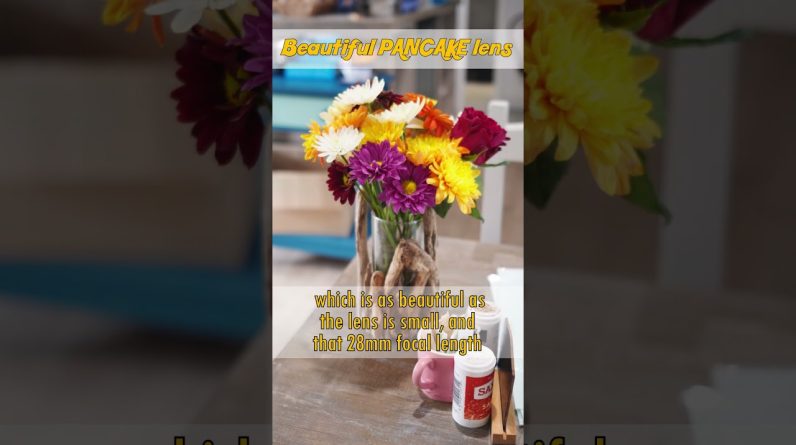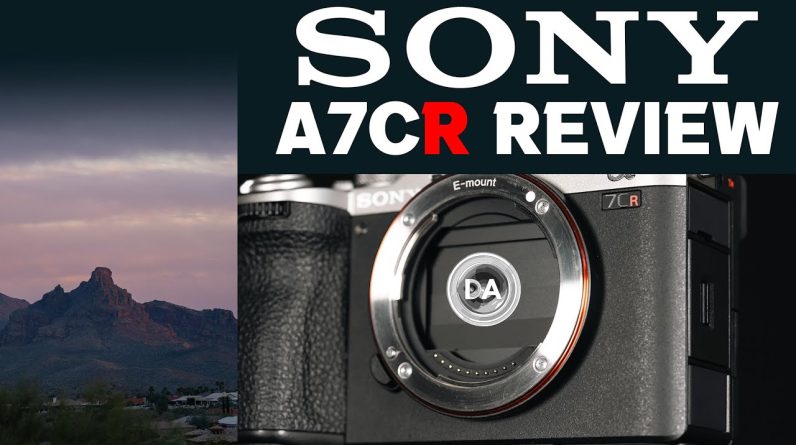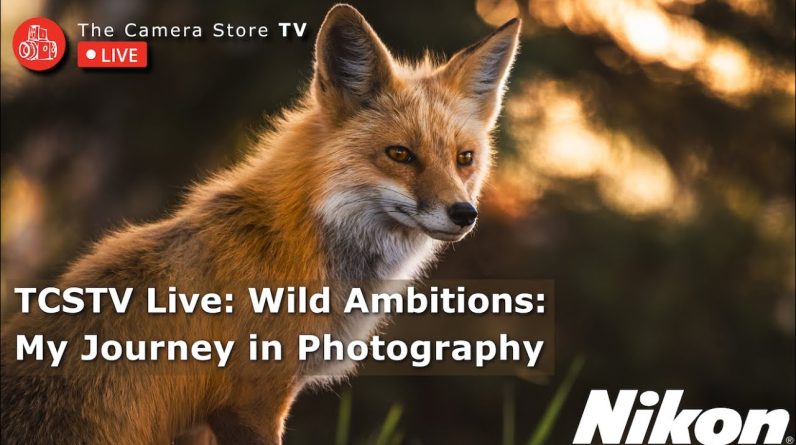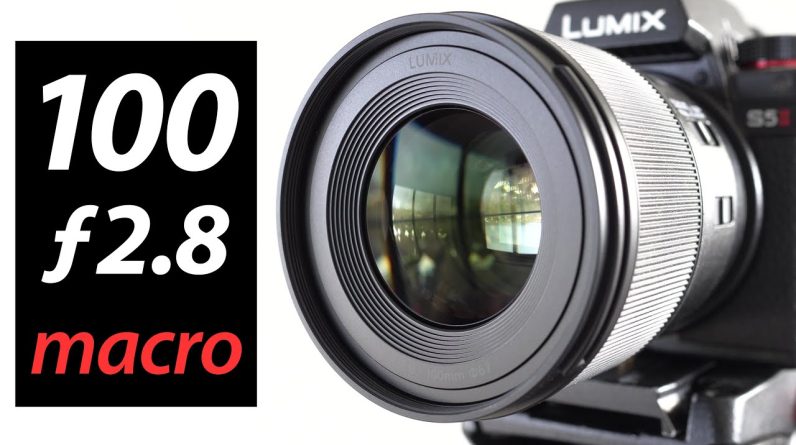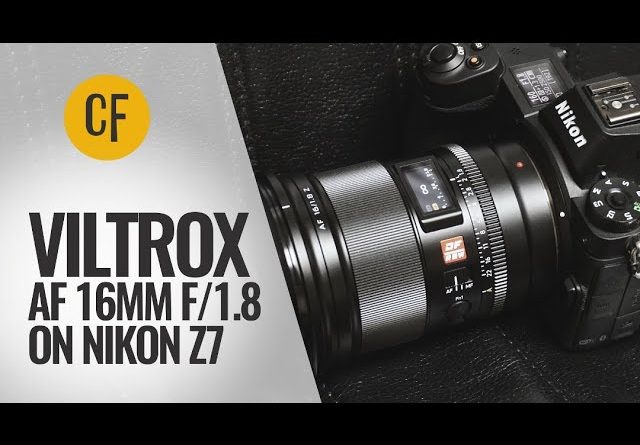[Music] Foreign Hi I'm Dustin Abbott and I'm here today To give you my definitive review of the Newest lens from Sigma which is a 14 Millimeter F 1.4 DG which means it's Designed for full frame DN meaning Designed for mirrorless in this case Sony e-mount which I'm testing along With Leica L and then it is from their Art series of lenses this is a dream Lens for astrophotographers and in many Ways it is a departure from what they Have done more recently with lenses like The 20 millimeter F 1.4 and the 24 Millimeter F 1.4 where the priority was Moving towards a more flexible more Compact lens that also happen to be very High performing this lens is obviously Not small or compact it is large and it Is heavy however it's also doing Something that no lens has ever done Namely to put this large of an aperture F 1.4 and the lens that goes to this Wider perspective over 114 degrees in The field of view So this is a huge engineering feat and As we're going to see I think that Sigma Has largely pulled it off however in a Few areas it's not quite as high Performing as some of the recent Sigma Lenses sigma's kind of spoiled us to Expect the world when it comes to the Optics and it's not a hundred percent
There though this is a very good lens as We will see It's also however the same price as the Sony 14 millimeter F 1.8 G master and While the G master has a smaller maximum Apture F 1.8 versus F 1.4 it's also Significantly smaller and lighter as We'll see and so for many people it is Going to come down to what their Priority is if your priority is shooting At night and getting as much light as Possible this lens is very intriguing if You're looking more for a general Purpose lens at 14 millimeter it's Probably going to be less so is it worth Buying well I think that really depends On what you use it for more after a word From our sponsor Today's episode is brought to you by Phantom wallet the minimalist modern Wallet that is now even better with the New Phantom X that is crafted from Aluminum right here in Canada it is 22 Percent smaller and 35 percent lighter While still making it easy to access Your cards and money when you need them Thanks to their unique Fanning mechanism You could even customize your wallet due To its modular design with accessories Like a money clip cash holder ID display And even chipolo and air tag tracking Integration visit Store.phantomwallet.com to check out Their unique sizes Styles and finishes
That span from aluminum to Wood to Carbon fiber and use code Dustin 15 for 15 off when you're ready to check out So as noted this lens is large and heavy You can probably see that as it sits Here you could probably pick that up From the fact that it's got a tripod Collar not typical for a wide angle lens It is 101.4 millimeters or four inches In diameter and 152 millimeters or six Inches long and it weighs in at 1160 Grams or 40.9 ounces so yes it is Neither small nor is it light it is just To give you some perspective it's about 52 or 53 percent longer than what the G Master is and it weighs 700 grams more Than what the G Master does the G Master Comes in at only 460 grams remember this Is 1160 grams that's a huge difference So if portability is a huge priority for You this is probably not your lens However it is extremely feature-rich Even more so than what the G Master is I Know that we're a custom of thinking of Lenses like those from Sigma as being a Less expensive alternative to a more Complex more feature-rich you know Sony G Master version that's really not the Play here Sigma really is kind of Positioning itself in some ways above The G Master rather than beneath it and So it has a ton of features it starts With the controls for the aperture where We have an aperture ring that has
Typical one-third stop to tents however There is a switch to de-click the Aperture and so you can do smooth Aperture racking it also has the uh an App an iris lock on it that allows you To lock it either into the manual Aperture ring or lock it out of the Manual aperture ring really depending on What your priority is some people love An aperture ring some people detest it And so that Iris lock makes sure that Whatever you prefer you can make sure to Not inadvertently either get into or out Of the manual aperture ring it also has An AF MF switch it has a focus hold Button which as always can be programmed To different functions from within the Camera body and then in a feature that Is kind of more specific to Astrophotography there is a manual focus Lock and what that allows you to do is You can preset for example the correct Distance to the stars and you can lock It into that position and even if the Focus ring gets moved it's not going to Change Focus that means that when you go Outside say at night in the dark you can Set up your shot and you don't have to Worry about focus at that instance you Can obviously use it for other Applications as well but it's really Designed primarily around Astrophotography Sigma has also designed The lip of the built-in
Lens hood here to where it's designed to Where you can hang a lens heater off of It and so if you're shooting in really Difficult conditions or maybe shooting Overnight time lapses you can set it up To achieve that now one of the Compromises for pulling off F 1.4 at 14 Millimeter is that as you can see this Is a curved front element you cannot use Traditional screw-on filters there now There is a rear fill filter holder at The back and while it's designed for Things like gel filters I also found That some of these filters like what I Have reviewed before like for say the 14 To 24 millimeter they will work here as Well and so you can lock those into Place also Also unique is the actual lens cap here Which is kind of unlike anything I've Seen before first of all there is a Couple of storage departments four Filters there and it's only going to fit Very very slim filters but anyway that Is an option to carry some in that cap And unlike most of these type caps that Go over a built-in lens Hood this is Actually a pinch style and so it will Lock into place and you don't have to Worry about ever uh inadvertently it Falling off I've had that issue in the Past with those that rely simply on Friction or suction to keep them in Place and so that is I think an
Improvement over the traditional design It's not a strength is the minimum Focus Distance this lens can only focus as Closely as 30 centimeters which is Further than either the 20 or the 24 Millimeter lenses and as a result the Magnification is really low for a Sigma Lens it is 0.08 times now to be fair uh Sony's G Master is only 0.10 times so just you Know 200s better and so it's not a Massive difference but it is a really Low performing lens in that attribute it Does seem like if you manually focus you Can get a little bit closer than 30 Centimeters however this is not going to Fool anyone to thinking that it's some Kind of macro replacement Now a quick few quick quick words on the Tripod collar um it is ARCA Swiss Compatible on the foot and so as you can See here I've gone right onto this Little mini tripod which by the way I Get asked about all the time this is the Open CT or Ctt1000 it's a tabletop carbon fiber Tripod and just so if you're one of Those people have been wondering what is That little tripod that's what it is It is ARCA compatible so you can screw Right on there obviously you can rotate It it is fully removable and on that Note they do include a little rubberized Sleeve that can go over the top of that
Area if you prefer to use it without the Tripod collar but obviously the tripod Collar is going to achieve a much nicer Balance maybe give you a little more Versatility for working off of a tripod Which a lens like this is going to often Be used in that setting it does come With this zippered lens pouch and as you Can see it is substantial because it Houses a substantial lens overall the Build quality is Top Notch which it Should be for a price point of 1600 US Dollars Autofocus is also at the very top of Sigma's game they have utilized their New HLA which stands for high response Linear actuator and it is their their High-end Focus motor this is only the Third lens to receive it at this point And so it means that Focus changes are Basically instantaneous there's lots of Power there and even though obviously There are some huge glass elements that Are going to be moving inside this lens It is able to move them very quickly and Very quietly Focus accuracy was very Good no complaints for Stills at all and Of course with a huge maximum apture Like that and a how high powered um Focus motor you're going to be able to Focus in very low light conditions which Obviously is a strength for this lens This really is designed for those kinds Of settings when it comes to video
Applications Focus pulls are smooth and Confident my only negative there is that You'll notice there is more Focus Breathing than what I would like Certainly a lot more than what I saw on The recent viltrox 16 millimeter F 1.8 Also it did well when it came to my hand Test with quick adjustments from the Hand to the eye it is a little bit large And heavy for gimbal work obviously Depending on the gimbal itself however The Focus motor is going to work really Well on that kind of application Likewise probably big and heavy for Vlogging but again the Focus motor is Going to work fantastic should you use It in those applications say you got a Really strong arm so this is It's a top Tier product from Sigma and it includes A top tier Focus system so let's talk About the image quality as noted this is A really hard lensed engineer it's hard To engineer a lens this wide period but To go to an F 1.4 aperture is huge That's two full stops faster than the First 14 millimeter lens that I reviewed Which was an F 2.8 maximum aperture and Obviously it is about two-thirds of a Stop faster than even what Sigma is Previously engineered for their previous 14mm was an F 1.8 so going that extra Bit of Maximum aperture takes a whole Lot of effort and as we're going to see Sigma has largely pulled it off let's
Dive in and take a look in detail so Let's start by examining the fact that This is a very wide angle of view over 114 degrees and as you can see just Holding the camera and looking down at My feet that's a long way down So to give you a little bit of Perspective on that here's a look at my Living room at the 14 millimeters of the Sigma if we compare it on the right to The recent viltrox you can see just how Much wider the framing is for the sigma So obviously it's much easier to crop in An image with today's high resolution Bodies than it is to go wider comparing It to the 17 millimeters of the Tamron 17 to 28 millimeters of popular Zoom you Can see that that is tighter framing Still and so obviously that 14 Millimeters gives you a lot of potential For capturing a room and you can see Here without any kind of correction that The lines aren't too bad there taking a Look at Distortion you can see that There is a bit of barrel Distortion Nothing too pronounced and certainly Some vignette that is present there I Did this manual correction by dialing in A plus nine and then a plus 71 for the Vignette now you can see that you know Lines are straight here along the edges And along the bottom there's still a Little bit of a bulge there at the top And so correcting further however would
Start to create some pin cushion Distortion so that's a pretty good Result for a manual correction and Obviously vignette that's right under Three stops of vignette and so that's Significant but it's by no means a deal Breaker compared to what some wide angle Lenses are like there is a correction Profile from Sigma that I had access to And so you can see that it does a pretty Clean job of cleaning all of the Distortion up now as far as the vignette Goes you can see here in the wide open Result compared to I'm just going to an F 5.6 I'm going to toggle off that Information so you can see the sky a bit More you can see that there's definitely A less even illumination on the F 1.4 Image it's darker here along some of the Foreground things whereas the it's more Even with the F 5.6 image there and so Obviously you're going to have to just Kind of correct to to taste but at the Same time this is not the end of the World as far as what's present now we Can see here looking at this that there Is a bit of longitudinal chromatic Aberration that is present it's not Terrible and frankly it's not likely to Show up all that often because there's Going to be very few situations where You're this close to your subject but at The same time there is a little of that Present now we can see that we're pretty
Clean from lateral chromatic aberrations Our transitions from black to white here Are quite clean and there isn't a lot of That fringing that would typically be There along the edge of the frame if it Suffered from lateral climatic Aberrations so let's talk resolution This is on my 50 megapixel Sony Alpha One and we're going to be looking at These results at 200 percent so right Off the bat in the center of the frame This lens is very sharp in the center of The frame lots of detail lots of Contrast it's pretty fantastic that you Get that much on a high resolution body On such a difficult lens to engineer for And certainly 14 millimeters has always Been a challenge 14 millimeters at F 1.4 Is a much greater challenge it's never Been done before I wouldn't be surprised Price if we don't see too much of it in The future either because obviously it Produces a big heavy and expensive lens Mid frame looks good but not exceptional And if we look down towards the corner We can see that the corners are only so So contrast is not great in the corners There is some resolution there but it Isn't fantastic it's not a complete you Know mush so it's not a mess but neither Is it just fabulous either now a mild Bit of stop down to F 1.8 on the right Side you can see that contrast does pick Up a little bit in the center of the
Frame the mid frame looks very slightly Better the corner you can see just a Little bit of contrast it hasn't really Like sharpened up significantly but you Can see that the darks are a little bit Darker and the brights a little bit Brighter there so just for the fun of it Let's check in with the recent viltrox 16 millimeter F 1.8 on the right both of These at F 1.8 obviously the sigmet 14 Millimeters the viltrox at 16 Millimeters so so in the center of the Frame at this aperture they are fairly Close as you can see I would say that The viltrox is showing just a little bit Better contrast however in the mid frame The viltrox is clearly better the same Is true if you look down towards the Corner where the viltrox is very Obviously better in terms of its Contrast and its detail in the corner of The frame so how about if we compare to The 14 millimeter F 1.8 G Master lens Center of the frame is before I kind of Centered my results on the chart there So if we look at the mid frame we can See that the um the two lenses are more Similar than different though I do think That the GM is a little bit sharper at That point looking down towards this Zone the two lenses look fairly similar Not a lot to distinguish between the two And looking down towards the corner the G Master is giving us more detail and a
Little bit more contrast towards the Corner of the frame now it's actually Between F 1.8 and F2 where we see a more Significant Improvement on this new Sigma you can see in the center of the Frame that we have really jumped up in Terms of the center amount of contrast And sharpness and the mid frame is Starting to improve still not quite There yet by F 2.8 here on the right you Can see we've achieved pretty much near Maximum sharpness and it is incredibly Sharp in the center of the frame and we Can see now that the mid frame is Starting to improve but we haven't seen A huge jump yet in the corner of the Frame so again for a little bit of Perspective viltrox here on the right Both of them at F 2.8 in the center of The frame we can see that the two lenses Are similar though the sigma is clearly The sharper of the two in the center of The frame in the mid frame however the Viltrox has the lead and obviously it Was already quite a bit better in the Corners and you can see here that the Viltrox is pretty much razor sharp now In the corner where the sigma is not Quite there yet now if we go back and Compare to the G Master at F 2.8 looking Somewhere near the center of the frame We can see that both of them are really Sharp hard to see much of a winner there In the mid frame here again the two
Lenses they don't look the same but they Are roughly similar in terms of their Performance down into the corner the G Master is the obvious sharper of the two There if I pop over on this side the G Master is ever so slightly better but The two lenses are more similar than Different now it's really between F4 and F 5.6 here on the right where the Corners really really sharpened up on The new Sigma and you can see now that It is razor sharp all across the frame Our minimum aperture is f 16 and as per Usual on a high resolution body Diffraction has robbed some of that Sharpness though it's still usable in a Pinch I would say here and because there Is some other Optical Improvement I'm More likely to recommend going as high As the limit here because you can see That there are places in the frame like The corners here where you are are Getting a better result than you do wide Open now if we go back to this image for A moment real world at 100 magnification A more typical look we can see that the Image is just full of detail all across The frame and our plan of focus extends All the way towards Edge and you can see Although this is too close to be in the The actual depth of field we can see That beyond that it is really sharp all The way to the edge of the frame and as We pan around this image in various
Places that we look there is plenty of Detail the image is looking really good So as noted previously our maximum Magnification level is not particularly High it's quite low and so you can see Here that up close performance is you Know it's okay but it's not exceptional Looking here we can see that we do have Good contrast getting very close to the Subject and we can see that it's pretty Neutral as it goes towards the defocus Here you can see going out into a real World shot that obviously our contrast In detail is nice up close and the Quality of the vocabulary is actually Quite good another shot here of Nala at F 1.4 you can see that the detail on her Is really really good and as you look Towards the background obviously it's Not completely blurred out but the Quality of the blur is quite nice and in This shot I actually thought that first Of all playing a focus detail looks good There but then as we look towards the The out of focus area that it is really Quite soft for such a wide angle lens so Taking a look at flare we can see here a Wide open F 1.4 here stop down to F9 so You can see that 11 bladed aperture is Going to produce a 22 bladed star that Has nicely defined Rays coming off of it No real ghosting are artifacts here dead On everything looks quite clean and so Not a lot to take away from as far as a
Ghosting or a veiling taking place Contrast is obviously held up perfectly Fine in both situations likewise here With the sun right in the frame we can See that there is no ghosting artifacts Here so that's very very positive there That it's held up with a very bright sun In the frame in this shot here obviously The sun being in the frame and wide open Detail and contrast has held up just Fine and and this image here I thought Looked really really good considering That the very bright sun is Right Beyond These leaves and it's coming through Here you can see the detail and contrast Is held up really really nicely what I Did see however is if the sum was just In a certain position right off the Frame and I was shooting in a vertical Position like this I could get kind of a Strange flare artifact and I it showed Up more than once you can see it here as Well so it seemed to be reserved for a Certain situation but it will show up And so you just have to be careful with Your composition because otherwise our Flare resistance is really quite good so Getting to the main event this is a lens That is purpose designed for Astrophotography and is one of the most Intriguing lenses for shooting the night Sky possible now I will give the quick Caveat that as we approach the summer Solstice here in the north this is shot
At 10 30 at night and as you can see We're still a long way from being a Hundred percent dark however it looks a Little bit lighter than what it actually Was for the simple reason that this lens Can suck in a massive amount of light in The situation so this is a lens or a Scene where I'm shooting this is an Eight second exposure it's only at ISO 160 and you can see that it is correctly Exposed for the night sky however it is This lens sucks in so much light that You can keep the iso really low so as a Byproduct you can also see that as far As the noise goes it's really really Clean for that reason the other Important thing is that as we look Towards the edge of the frame there is Very very little coma to see Star points Are staying nice and precise and clean And as we look elsewhere they look Really good also this shot kind of is Intriguing to me as this is actually the Moon here to the left but you would Think this is a sunrise shot here Because the light is so intense and that Is because this lens is just sucking in So much light and although this is a Little bit longer exposure it's 15 Seconds so star points are starting to Stretch a little bit moving towards Those star Trails what we can all also See is that even with a longer exposure Right off towards the edge of the frame
There is very very little coma so this Lens does Excel and it's you know kind Of highest most intended purpose the Final thing that I'll point out is that The colors to me were really pleasing From the lens nice saturation levels Without looking gauche or garish it just Looks really really nice here's one Final image to see and you can see also Here as well that even though the Lighting conditions weren't amazing when I was out shooting I felt like the Colors that it picked up were really Nice and the overall look of the images Were really nice obviously being able to Compose with a 14 millimeter lens allows You to really emphasize a foreground and A shot like this and to give a little Bit more visual interest to the image Linda's like the 20 millimeter F 1.4 DNR Were really easy for me to Wholeheartedly recommend because of the Strong performance reasonable size and Reasonable price tag this obviously is Not a tool for everyone it's a Specialist tool it is is much more Expensive than the 20 millimeter F 1.4 DM it's obviously far more expensive Than the viltrac 16 millimeter F 1.8 Which you can get for around 550 dollars And is a very strong lens However it is a specialist tool it's Wider than those lenses and it has that Huge maximum aperture something that's
Never been done before in this Particular combination so there's really Nothing else out there that is going to Give you the same kind of images that You can capture for astrophotography With this lens it's a wider angle of View with a bigger maximum aperture And so if that is your primary Application I would say yes this lens Could be worth the 1600 US dollar price Tag for you for many people that are Looking for more of a general purpose Lens however this lens is going to be Overkill and it's going to be too big And too heavy to really mess with and You probably should look at some other Alternative but if your specialty or Your passion is astrophotography and you Want a lens that is going to give you More versatility than any lens you've Used before in that kind of setting look No further than the Sigma 14 millimeter F 1.4 dgd in art it is literally one of A kind I'm Dustin Abbott and if look in The description down below you can link It get linkage to my full text review Also some buying links there if you'd Like to purchase there's linkage to Follow myself or Craig on social media To become a patron to get channel Merchandise and if you haven't already Please like And subscribe thanks for Watching have a great day and let the Light in
[Music] Foreign

